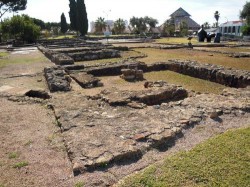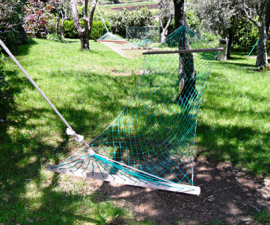In Vilamoura, Portugal, travelling is not limited to creating personal memories and trying to freeze them with photographs and travel journals. Visiting Vilamoura’s Roman Ruins of Cerro da Vila, for instance, guarantees to travellers that, aside from having a memorable trip, they can also walk down the history lane and fill their eyes with an entrancing display of remnants of the Roman era.
Although Vilamoura has only been in existence for nearly 30 years and its history is not very extensive, the place is still interesting and remarkable in nature with a few historic places located in close proximity to the resort and the marina. One of these, of course, is the Roman Ruins of Cerro da Vila, which boasts of a collection of architectural structures and archaeological pieces. The place has been a must-visit for every vintage lover and avid traveller who comes across Vilamoura.
Digging into the Past
 The establishment of the first settlements in the region of Algarve, Portugal, was credited to Romans, who were once its captors. But while the Romans were its first settlers, the Visigoth and Moors also have their fair share of remnants in the Cerro da Vila area. Cerro da Vila, in fact, used to be a part of the Ossonoba territory, which, during the 18th century, was under Moorish rule. The place’s name literally translates into “Moorish town.”
The establishment of the first settlements in the region of Algarve, Portugal, was credited to Romans, who were once its captors. But while the Romans were its first settlers, the Visigoth and Moors also have their fair share of remnants in the Cerro da Vila area. Cerro da Vila, in fact, used to be a part of the Ossonoba territory, which, during the 18th century, was under Moorish rule. The place’s name literally translates into “Moorish town.”
Among its former rulers, the Romans had the greatest influence on the landscape of Cerro da Vila. They brought to the place and to the entire Portugal their signature architectural touches, erecting establishments of concrete and bricks, and accenting them with arches and pillars. And the Roman ruins of Cerro da Vila showcases what has been left of Romans’ flair in building a settlement. Although only a small fraction of the whole village survived, the remnants still suggest the intricacies of design and choice of sturdy materials of Romans.
Finding Beauty in Wreckage
Vintage and art lovers as well as historians and seasoned travellers will find the Roman Ruins of Cerro da Villa enchanting, with its ruins of baths, dams, fishing stations and necropolis (burial tombs that clearly speak of Roman’s art.
The Roman Ruins of Cerro da Vila are composed primarily of the remains of two residences and baths are composed of compartmentalized walls made of bricks. The atrium, a trend in classic Roman architecture, is also identifiable, as well as its impluvium or sunken parts. Lovers of Roman art are also able to recognize the traces of a tablinum, or a room generally situated on one side of the atrium.
People say that the manor house used to be a part of a once busy port, which served as a commercial hub for the exchange of imported goods and products. Other traces of the manor house include a reception area, service areas for slaves and servants, and a kitchen. Two kilometres from the area, you will find the remains of a dam that used to water fertile lands of the villa.
It is evident from the remnants that old houses in this side of Vilamoura hosted well-to-do Romans, who had a fine taste for art and design. There are the vestiges of polychromatic mosaic pavements, as well as traces of marble and painted stucco that once adorned the walls of the manor house. Also preserved are two rectangular tanks that used to be of service to fish salting buildings.
Glue History pieces together
The Roman ruins of Cerro da Vila has been a part of the Programa de Valorização e Divulgação Turística: Itinerários Arqueológicos do Alentejo e Algarve (Touristic Valorisation Program), as decided by the Ministry of Commerce and Tourism and the Secretary-of-State for Culture.
Your visit to the foremost historical attraction of Vilamoura will be completed with a comprehensive account of Cerro da Vila. You can go to the Cerro da Vila Archaeological Museum on the ruins site to know more about the background history of the place as well as learn interesting information about Roman art and architecture. The centre or museum was built in 2000 by the famous architect, Fernando Galhano. Today, the Instituto Gestão do Patrimonio Arquitectónico e Arqueológico-IGESPAR (IPPR) runs the museum and serves every visitor of Cerro da Vila.


